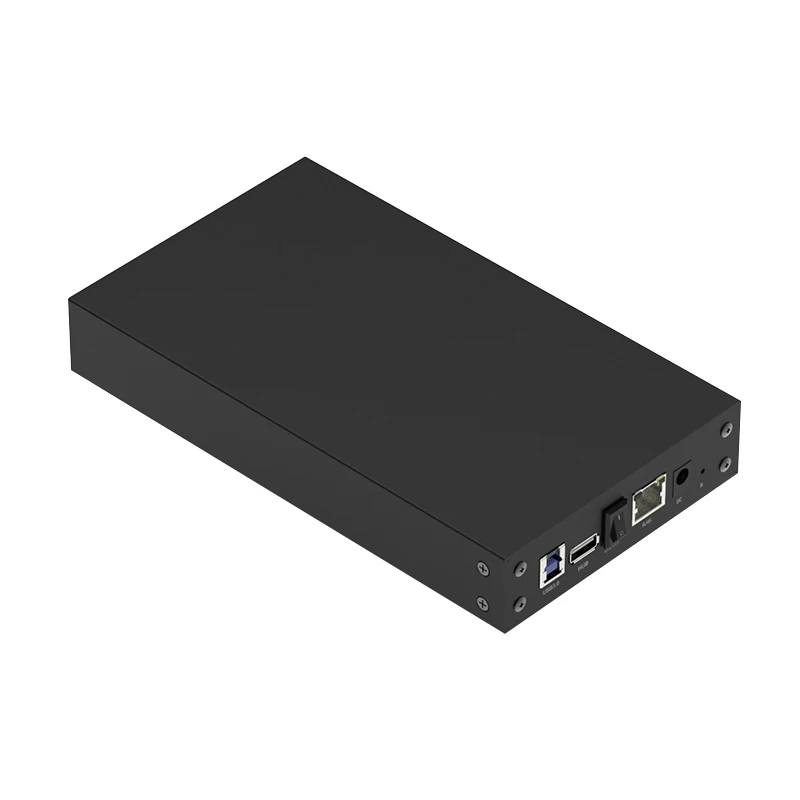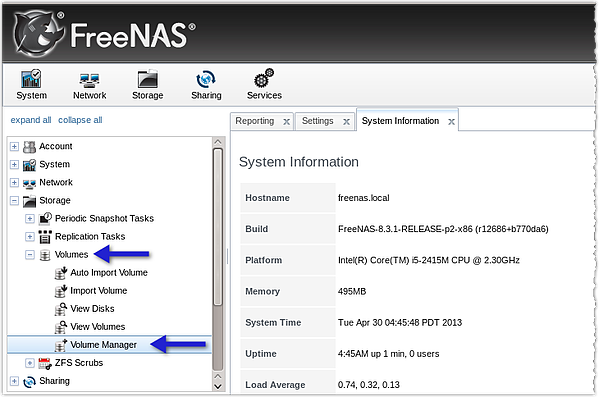Free Nas File Share For Mac And Windows

Today we’ll talk about how to create Windows shares on FreeNAS. This free and open source operating system is quite powerful but it’s not as easy-to-use as it should be. Creating a Windows share requires several steps in different “areas”. Anyway, the operation can be completed in a couple of minutes.
FreeNAS offers a stable platform for home and office use. From a simple file server to a connected media hub, it's possible to configure FreeNAS to perform a variety of tasks on behalf of other PCs on the same network. Thankfully, to install the OS, it doesn't require much time or knowledge.
What you need to get up and running with FreeNAS
Before you begin, you need to ensure that you have everything you need. This includes the following:
- A device that meets minimum requirements (see the link above).
- 8GB USB drive (for OS).
- 1GB USB drive or DVD (for OS install).
- FreeNAS .iso file.
In order to install FreeNAS on a free PC, you need to make sure the USB drive is bootable and has all the necessary files. Because disks are fading out in favor of removable media, here's how you can get a USB drive ready to go:
- Download FreeNAS.
- Insert your USB drive.
- Download Rufus (a program to create bootable USB drives).
Run Rufus, and select the USB.
- Click the disk image next to Create a bootable disk using.
- Navigate to the downloaded FreeNAS .iso file.
- Select the .iso file.
- Click Start.
The USB drive is now ready to be inserted into the FreeNAS PC to install the OS.
Installing FreeNAS OS
When firing up your FreeNAS PC, you should see a boot screen that displays FreeNAS as an option. You'll want to select this to continue. If nothing appears, you may need to hit the boot menu shortcut for your motherboard (ours is F11) during startup or make sure the USB drive has been successfully set up. Then do the following:
- Select Install/Upgrade.
- Select the spare USB drive (FreeNAS will not install on the one containing the OS so fear not if you select the wrong one) with the spacebar.
- Hit Ok.
- Enter a root password.
- Hit Ok.
- Wait for the OS to install.
- Reboot the PC.
Once FreeNAS has loaded, it's possible to select from various entries on the main menu, or detach the PC from a monitor and log in to the web interface from another PC on the same network. Mac convert mp4 to mp3. The FreeNAS machine should provide a URL, which is essentially the IP that has been assigned to that particular machine by the network. For example, we access our FreeNAS test machine using 192.168.0.13 in the web browser.
Initial FreeNAS setup
After successfully connecting to the machine from another PC, the web interface will walk you through configuring various settings, including language, keyboard layout, and more. It's possible to exit this wizard and do everything manually. We'll run through the Wizard in our setup process to keep everything simple.
Enter a pool name (can be unique or simply 'storage').
- Click Next.
- Choose RAID setup (can be left on 'automatic').
- Click Next.
- Select desired Directory Service (can be left on Active).
- Click Next.
- Enter share name.
- Select Windows (SMB).
Hit Ownership.
- Enter a username and select Create User.
- Enter a password.
- Create a new group and select Create Group.
- Alter permission boxes to reflect what we have.
- Hit Return.
- Hit Add.
Click Confirm.
- Click Next.
- Only configure this window if you wish to set up email on the server.
- Click Next.
The web interface will now run through the configuration and apply all changes you made. This may take some time.
Setting up volumes
Here's how to set up a new volume:
- Go to Storage > Volumes > Volume Manager.
- Enter a name for the volume.
- Add an available disk.
- Configure the volume layout.
- Click Add volume.
Now you'll need to configure services for sharing and access.
- Click on Services at the top.
- Enable SMB.
That's it. This is a basic setup using FreeNAS that will now allow for connections to be made via OS file viewer programs (Explorer on Windows and Finder on macOS, for example). Simply connect through the respective GUI options or directly by using the same IP address that is used for the web interface. A credentials window will pop up asking for login information. Enter the same user account and password you created back in the wizard.
Mapping Windows
In Windows, you can map the FreeNAS location to a specific drive letter so it appears in Windows Explorer as an internal hard drive. Here's how:
- Open Explorer.
- Right-click on This PC.
- Click on Map network drive...
Choose a drive letter.
- Hit Browse.
- Browse to the network location.
- Click Ok.
- Click Finish.
Now a virtual drive will appear in Explorer, allowing for more convenient access.
Your turn to play around
Now's the time to play around with FreeNAS, exploring different aspects of the OS through the web admin interface. You can activate various services that you may desire to use, remembering that this is quite the capable platform that can be deployed as a media center with full support for popular media services, such as Plex. The best part about learning through trial and error is that it doesn't take long to reinstall the OS if you happen to really mess everything up.

Got FreeNAS up and running? Let us know in the comments what you're using it for.
Updated August 15, 2018: We updated this guide to include the latest info on installing FreeNAS.
We may earn a commission for purchases using our links. Learn more. Roland egx-350 drivers for mac.
Expanded optionsState of Decay 2: Juggernaut Edition announced for the Epic Games Store
In an interesting announcement, Undead Labs has confirmed that State of Decay 2: Juggernaut Edition will launch on the Epic Games Store on March 13.
If you allow a Windows PC to access your Snow Leopard files, you’ll also probably want to putter around with files on a Windows PC. Accessing files on Windows computers relies on the Samba component (a part of the UNIX foundation of Mac OS X). Follow these steps:
Choose Go→Connect to Server from the Finder.
The Connect to Server dialog opens.
In the Address box, enter smb://<ip address>.
Here ip address is the IP address of the Windows computer that you want to connect to.
Click the Connect button.
Depending on the type of account you have on the Windows PC, Mac OS X might display an SMB (Server Message Block) authentication dialog in which you can enter your username and password.
Select the desired shared drive to mount from the pop-up menu.
If you’re accessing a file shared on a Windows 95 or Windows 98 computer, simply click OK to mount the share.
Mount the shared drive according to the Windows version.
If you’re accessing a file shared on a Windows NT, 2000, XP, or Vista computer: Click the Authenticate button. Then enter your username and password, click OK, and then click OK again to mount the share.
After you mount the shared drive, you’ll see it appear on your Desktop, just as you see a Mac volume. You can use this drive just as you do any other drive on your system. To disconnect from the Windows share, you can
Drag the icon to the Trash in the Dock (which changes to an Eject icon when you start dragging).
Press Command+E.
Hold Control, click the icon, and then choose Eject from the menu that appears. (If your pointing thing has multiple buttons, right-click the icon instead.)